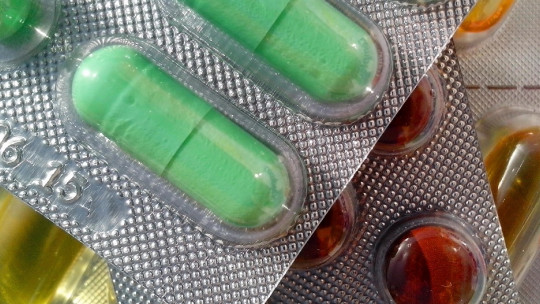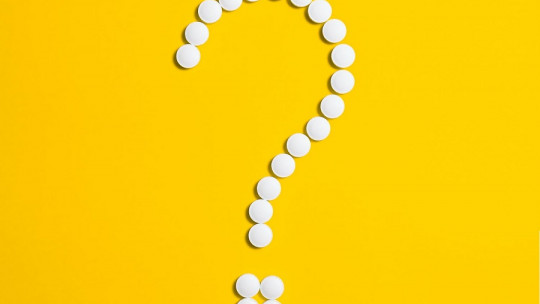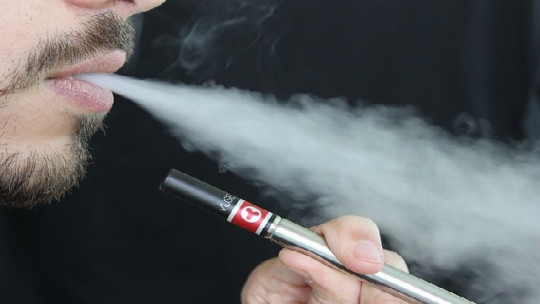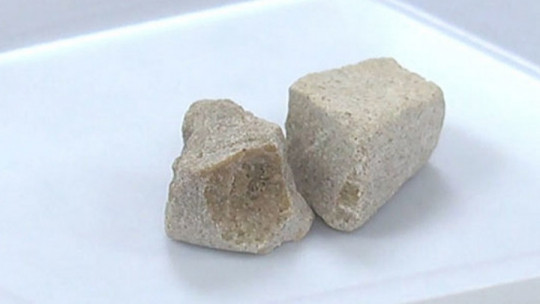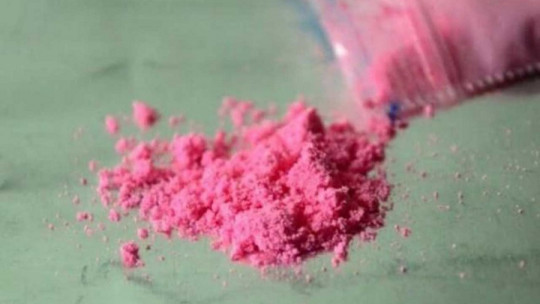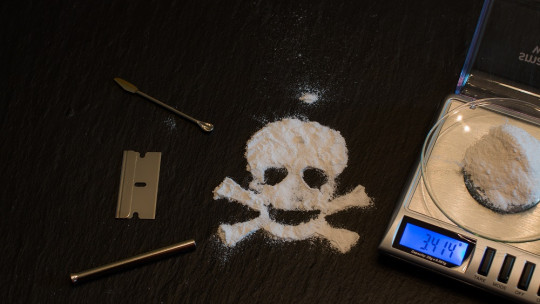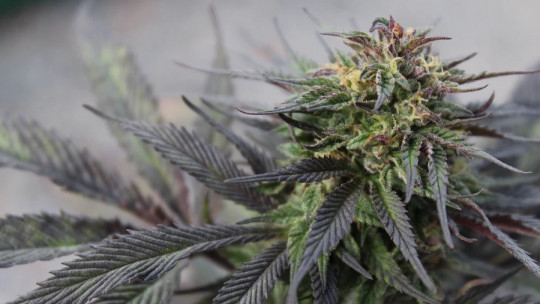
Drug addiction has become a serious problem, especially among youth, given that they are the target population group of drug dealers, in addition to the fact that the consumption of this type of substance at these ages significantly influences adult life.
Although not all drugs are illegal, the case of alcohol being one of the most harmful substances there is and which can be perfectly obtained in any supermarket, it is true that the majority of drugs with extremely serious repercussions for health they are forbidden.
Next we will see the main types of illegal drugs in addition to addressing a little more about some of them, their desired and harmful effects and what their legal status is.
Types of illegal drugs
Before going into more detail about illegal drugs, it should be noted that the list presented below is based on those substances whose consumption and sale is illegal in Spain. In other countries, these drugs may vary.
The drugs we will see next They have been grouped according to the classification most shared by both psychiatrists and drug addiction experts looking below at several groups: cannabinoids, stimulants, opioids, recreational drugs, dissociative drugs and hallucinogens.
Cannabinoids
They are those substances that have been made from the hemp or cannabis plant. In this article we will see both the effects of the plant itself and its derivatives.
1. Cannabis, marijuana and hashish
Although cannabis is progressively changing its legal status, today Today, buying and selling is still penalized, especially if it has a recreational purpose
It is one of the most popular, with statistics indicating that at least 10% of the population of developed countries has had some experience consuming this substance.
Your long-term consumption has been associated with apathetic symptoms and loss of interest, relating it to progressively lower performance at a social, academic and work level. It also affects the cognitive area, especially concentration and memory.
Cannabis smoke has been associated with respiratory problems, as well as sexual problems, affecting the menstrual cycle in women and problems with sperm quality in men.
However, of all the effects that frequent cannabis consumption implies, whether in the form of marijuana or hashish, it is behind psychosis and delusional symptoms, although it should be indicated that Not everyone has the same predisposition to suffer from these symptoms related to schizophrenia.
In any case, marijuana is considered a soft drug, since it is considered that it does not cause dependence on a physical or chemical level, but it does cause psychological dependence, knowing that it causes alterations in the central nervous system.
Marijuana consists of the flowers, leaves, seeds and dried stems of cannabis, a plant which contains tetrahydrocannabinol or THC, which is the active ingredient of the drug that causes its known effects. The brain naturally has receptors for THC that is why it has effects on a psychological level.
On the other hand, hashish consists of the resin of the marijuana plant, consisting of a brown paste that can be sold illegally in a highly adulterated form.
Stimulants
They are substances that have a psychostimulant effect on the individual who has consumed them. The best known are amphetamines and cocaine.
2. Amphetamines
Amphetamines and, at a more popular level, speed, are substances that, if consumed frequently, can cause severe depression. Also what has been called toxic amphetamine psychosis may appear usually confused with schizophrenia.
Amphetamines are psychotropic drugs and, really, one could not say that they are illegal because, in fact, they are prescribed and can be found in pharmacies, intended primarily for patients with ADHD.
However, Without a psychiatric prescription, its consumption is not legal, and, although many people may think that it will help them concentrate, the truth is that its side effects are triggered. Its degree of addiction is very high.
Despite this, There are not a few university students who consume them hoping that miraculously it will make them study like crazy and pass the midterms by bending their elbows the same week that the tests are taken.
Among the effects considered that we could consider desired are increased concentration if there is psychopathology, euphoria, disinhibition, activation, improved memory, feeling of self-control, less fatigue and regulation of hunger.
Overdose of these substances causes irritability, seizures, increased temperature and in the worst case, death.
Among the more physical symptoms caused by amphetamine use over time are problems with hair quality, acne, weak nails, as well as gum and tooth diseases.
3. Cocaine and crack
This drug comes from the coca plant, obtained from its leaves. Its mechanism of action on the body involves the alteration of brain dopamine levels, specifically in the mesolimbic reward pathway, causing a feeling of euphoria, as well as security and strength.
The risks of cocaine use are multiple, including respiratory problems and nosebleeds due to inhaled use.
It also causes sleep disturbances, restlessness, irritability and episodes of both physical and verbal aggression. Also affects the circulatory system producing vascular accidents and cerebral infarctions.
Psychiatric complications include anxiety attacks, delusional ideas, confusion, hallucinations, memory alterations, and lack of concentration.
It must be said that yes It has legalized use in some countries, especially as an analgesic for certain types of surgeries.
Within cocaine is crack, a drug which is equally illegal but cheaper, consisting of a mixture of cocaine with sodium bicarbonate, that is, the typical fruit salt to calm heartburn.
Opioids
Opioids are substances whose mechanism of action affects opioid receptors, which are found in the central nervous system and also in the gastrointestinal tract. The best known opioid drug is heroin.
4. Heroin
Heroin is a substance whose prolonged use can lead to personality changes of the person addicted to the drug, in addition to depression, anxiety and memory problems.
The degree of dependence on this substance once consumed is very high, meaning that if you have had a first contact with it only once, the chances of ending up addicted to heroin skyrocket.
It can alter the body at a nutritional level especially due to the fact that it causes gastrointestinal, cardiovascular, liver and kidney problems.
Recreational drugs
Also called designer drugs, they are those drugs that are used especially in party contexts, such as discos or dance halls, and that in order to be produced require being synthesized in laboratories.
5. MDMA
MDMA (3,4-methylenedioxymethamphetamine), also called ecstasy is a substance that fortunately few people have had the opportunity to consume, being sold in the form of tablets, pills or powders.
It is estimated that in most countries less than 1% of the population has had direct contact with this substance.
At first it causes a state of euphoria, altering serotonin levels in the brain ; However, after a few hours it gives way to negative feelings and lack of energy, such as exhaustion, sadness, aggression and anxiety, symptoms that can last several days.
At an organic level, ecstasy causes changes in heart rate and an increase in body temperature, tremors, convulsions and contraction of the jaw. Kidney and liver failure are not uncommon.
Dissociative drugs
These types of drugs make the person feel like they are losing consciousness or feeling outside of their own body.
6. Ketamine
Overdose of this substance can cause complete loss of consciousness, coma and even death. There may also be urination problems, eye problems, digestion difficulties, respiratory depression and cardiac arrest.
One of the best-known symptoms is what has been called a ‘bad trip’, which essentially consists of a panic attack accompanied by a horrible feeling of anguish.
Other notable symptoms are paranoia, flashbacks, brain damage, memory failures and other higher psychological processes in addition to language difficulties.
7. Phencyclidine (PCP)
Phencyclidine, more popularly known as angel dust, is a drug that, when it was synthesized in the 1950s, was intended to serve as an anesthetic, but Over time it was discovered to have undesirable side effects and was withdrawn
It consists of a white, crystalline powder that dissolves with water or alcohol, although it is difficult to find it in its pure state and other substances are usually added that make it acquire a brown tone.
Undesirable effects include delirium and confusion. Produces hallucinations and dissociation feeling of strength, numbness in the extremities, speech problems, coordination difficulties, rapid saccades and amnesia.
Among the psychiatric symptoms you can find anxiety, paranoia, psychosis, hostility and thinking that you are in danger of death.
Overdose causes convulsions, coma, and death, usually from accidental injury or autolytic actions.
Hallucinogens
The symptom shared by hallucinogens is to produce, as its name indicates, hallucinations and a sensation of distortions of reality.
8. LSD
Among the best-known hallucinogens is LSD, whose consumption may be behind the appearance of mood and anxiety disorders
Among the most popular symptoms of hallucinogens are ‘flash-backs’, in addition to severe depressive episodes, paranoia, synesthesia, memory failures and thinking problems.
LSD It does not cause physical dependence nor is it toxic if consumed occasionally but it is important to keep in mind that it implies negative symptoms for the body and conscience of the person who has consumed the drug.
9. Magic mushrooms
Although the long-term risks of consuming mushrooms with hallucinogenic properties are not yet known, it is known that they cause anxiety and panic attacks, as well as emotional instability.
It has been seen that the mood prior to consuming these mushrooms influences the symptoms they will generate. If you are in a bad mood a “bad trip” can occur while otherwise the experience can be quite pleasant.
Mushrooms make you see bright colors, have quite complex hallucinations and even mystical experiences.
Among the most consumed mushrooms are the fly agaric and psilocybes, which are consumed dehydrated. They do not seem to cause addiction.

